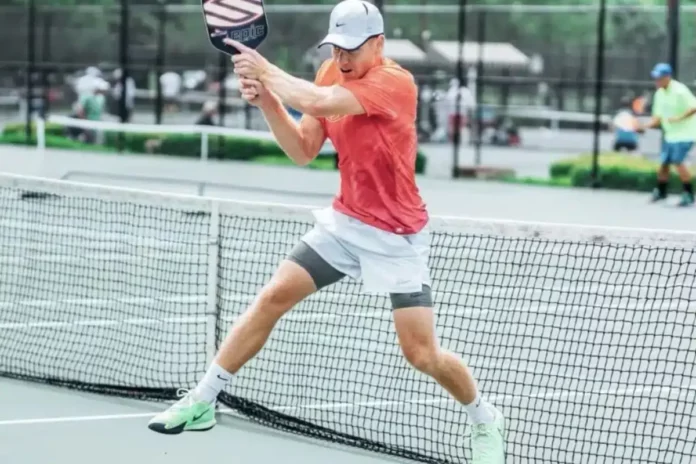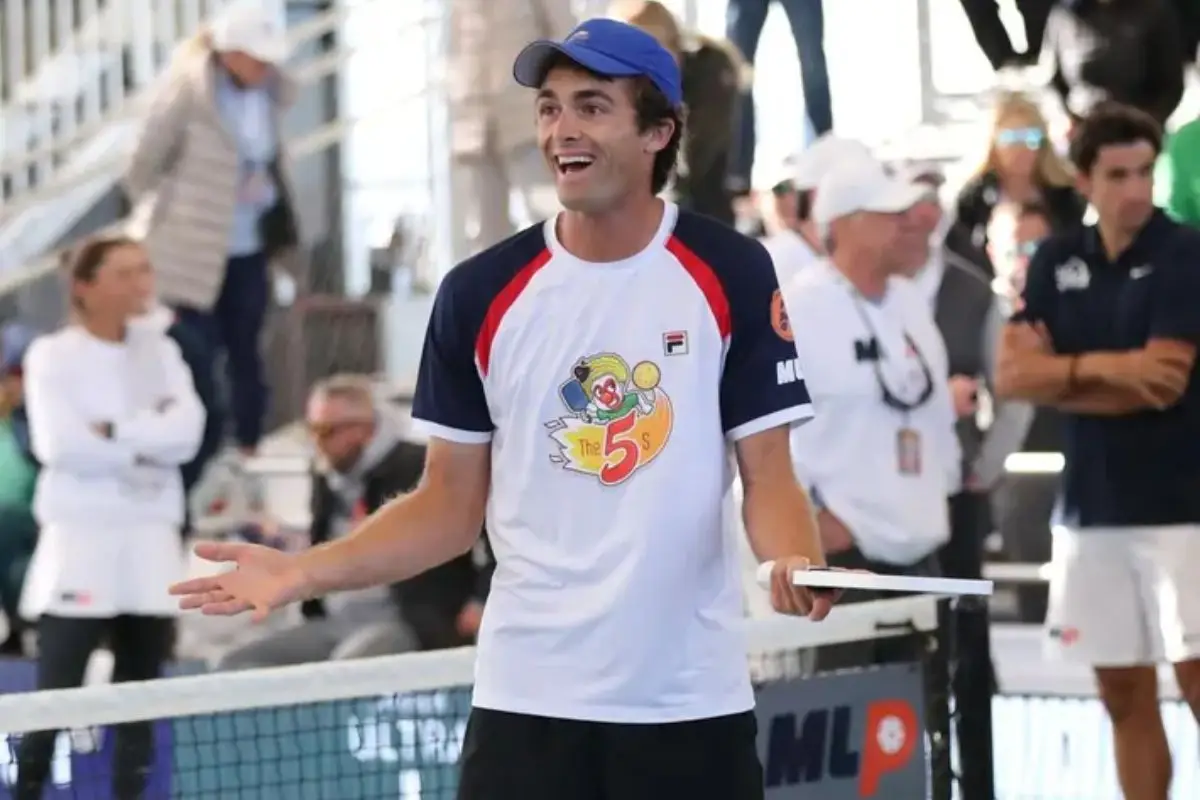James Ignatowich’s Professional Tips: In professional pickleball, the two-handed backhand dink has become a crucial shot in a player’s skills. James Ignatowich, a rising star on the pickleball court, recently took to Instagram to share his expert tips for mastering this essential pickleball shot. In a sport where precision and consistency are paramount, Ignatowich’s advice focuses on the importance of maintaining control, minimizing unnecessary movements, and mastering the unit turn.
Avoiding Common Mistakes in Two-Handed Backhand Dink
One of the most common pickleball mistakes that players make when executing the two-handed backhand dink is attempting to generate excessive topspin by brushing the ball too aggressively. Ignatowich explains that while topspin is beneficial, it should not come at the expense of consistency.
“I think that you are getting, of course, a good amount of topspin on the two-handed backhand dink, but you do not want to be sacrificing consistency for topspin.” – (James Ignatowich)
The mistake of over-brushing leads to a lack of control, making it harder to consistently return the ball with accuracy. As Ignatowich points out, a compact and controlled motion is far more effective in ensuring that the dink remains a reliable part of a player’s game.
Focus on Short, Controlled Swings
Ignatowich emphasizes the importance of keeping the swing short and compact.
“I’m trying to stay solid and keep my swing as short as possible.” – (James Ignatowich)
The goal is to avoid any extra movements, especially during the backswing. A longer backswing can lead to inconsistency and unpredictability, particularly when a player is under pressure.
By limiting the length of the swing and focusing on a compact motion, Ignatowich ensures that the shot remains controlled and precise, allowing him to maintain consistent placement while minimizing mistakes.
The Role of the Shoulders in Dinking
A key element to executing a successful two-handed backhand dink is using the shoulders rather than relying solely on the arms or wrists. According to Ignatowich, this shift in focus is essential for creating consistency.
“If you see the most consistent dinkers, it’s coming from the shoulders, not the arm and the wrist.” – (James Ignatowich)
This pickleball technique is rooted in the concept of a “unit turn,” a crucial part of the dink motion. By turning the body as a single unit rather than overworking the arms and wrists, players can maintain greater control and repeat the motion with more accuracy. Ignatowich stresses that this movement is less tiring and more sustainable throughout a match.
The Importance of the Unit Turn
The unit turn is a central concept in Ignatowich’s approach to dinking. He believes that this simple but effective motion is vital for players seeking to achieve consistency. “It’s very, very easy, in my opinion, to do this over and over again,” he says, referring to the motion that combines the shoulders and body in a seamless unit turn.
By engaging the body as a whole and minimizing reliance on the arms, players can repeat the dink shot with precision and without the fatigue that comes from overusing the wrists or arms. The unit turn allows for more efficient movement and a smoother, more consistent swing, which is crucial when trying to outlast opponents in fast-paced rallies.
News in Brief: James Ignatowich’s Professional Tips
James Ignatowich shares expert tips on mastering the two-handed backhand dink in pickleball. He emphasizes avoiding excessive topspin and maintaining consistency by using short, controlled swings.
Ignatowich highlights the importance of engaging the shoulders and using a “unit turn” to generate power and precision while minimizing fatigue. This pickleball technique allows players to maintain accuracy and control, making the dink a reliable and effective shot, even under pressure. His advice is valuable for players of all levels.


